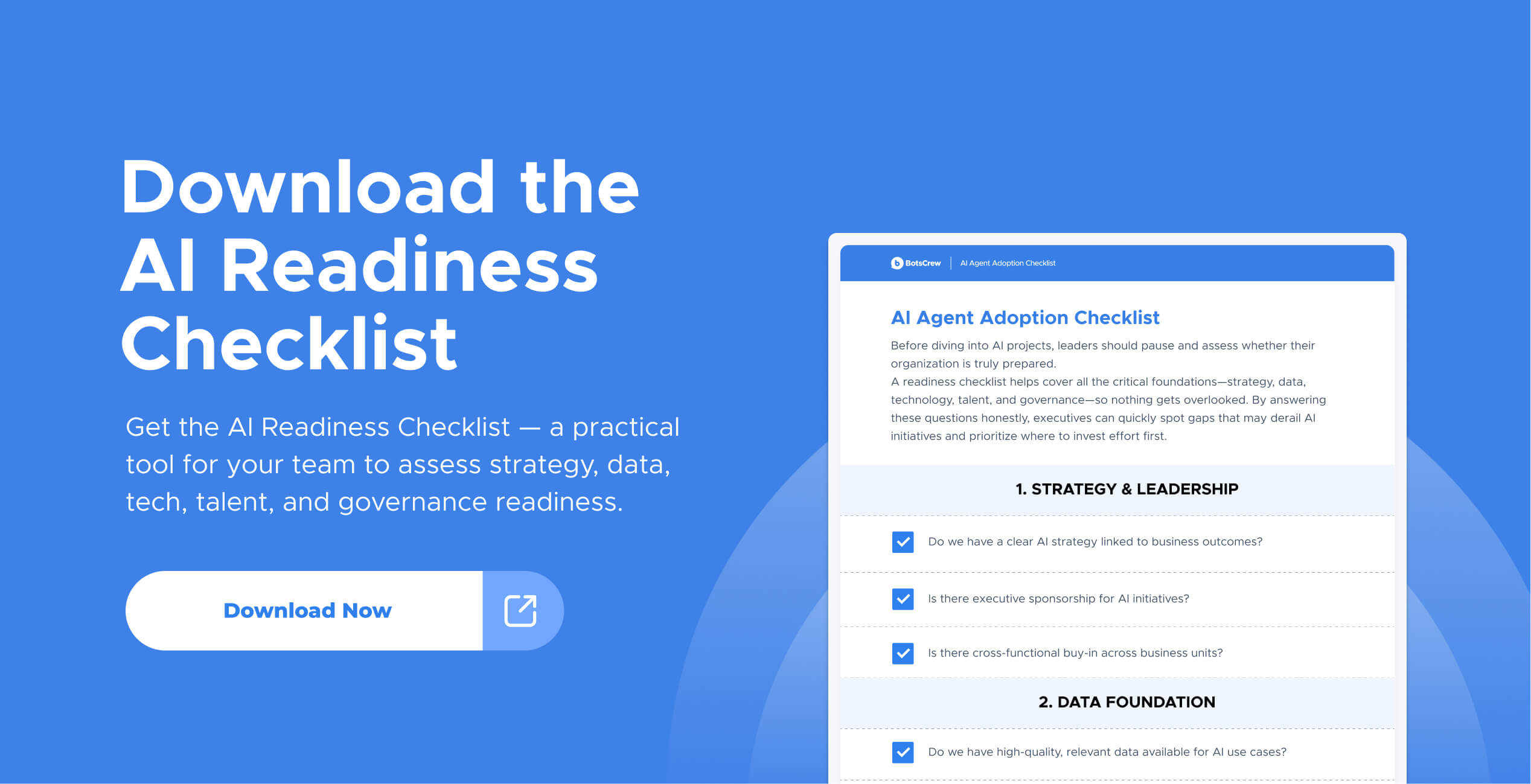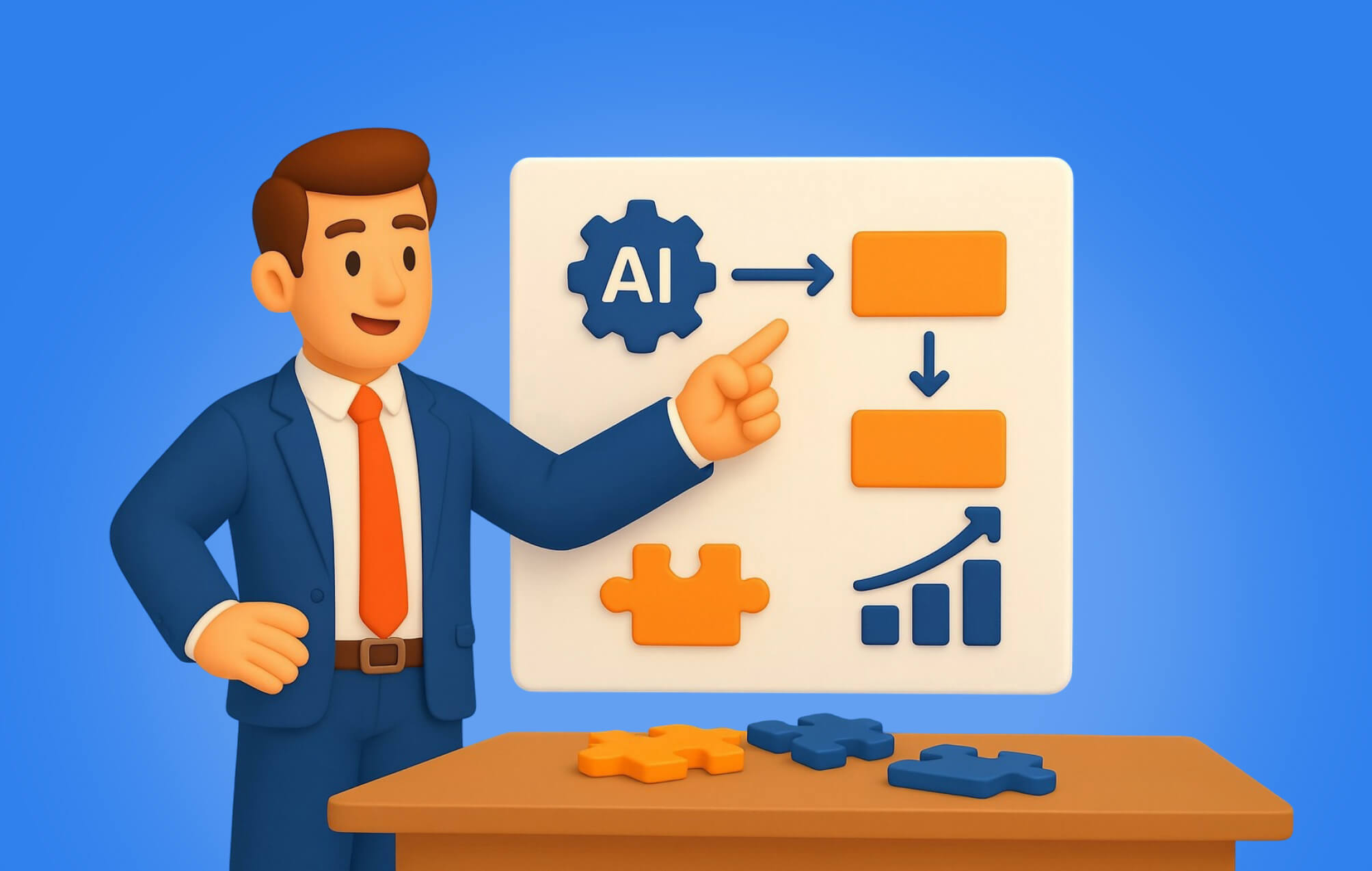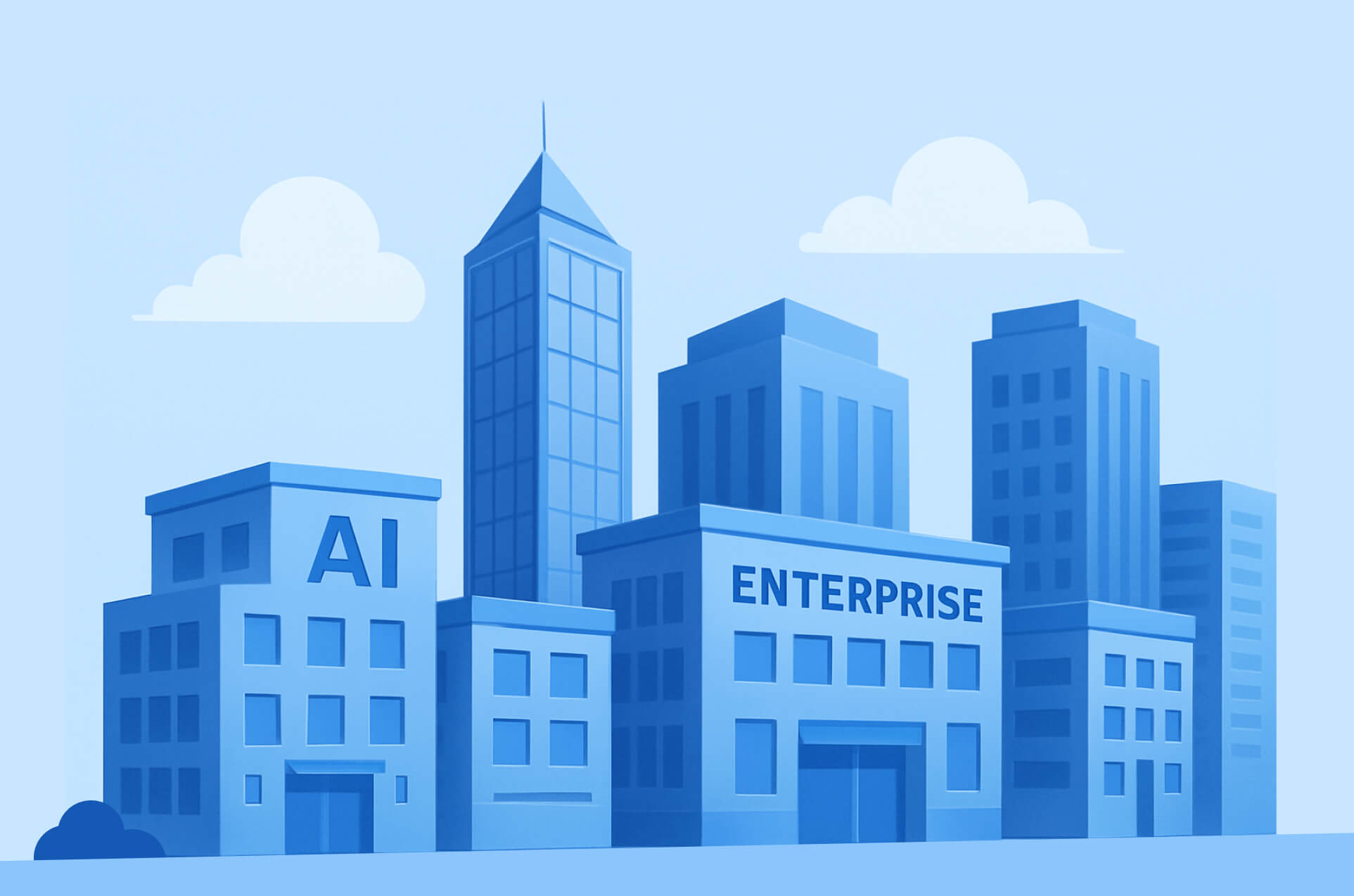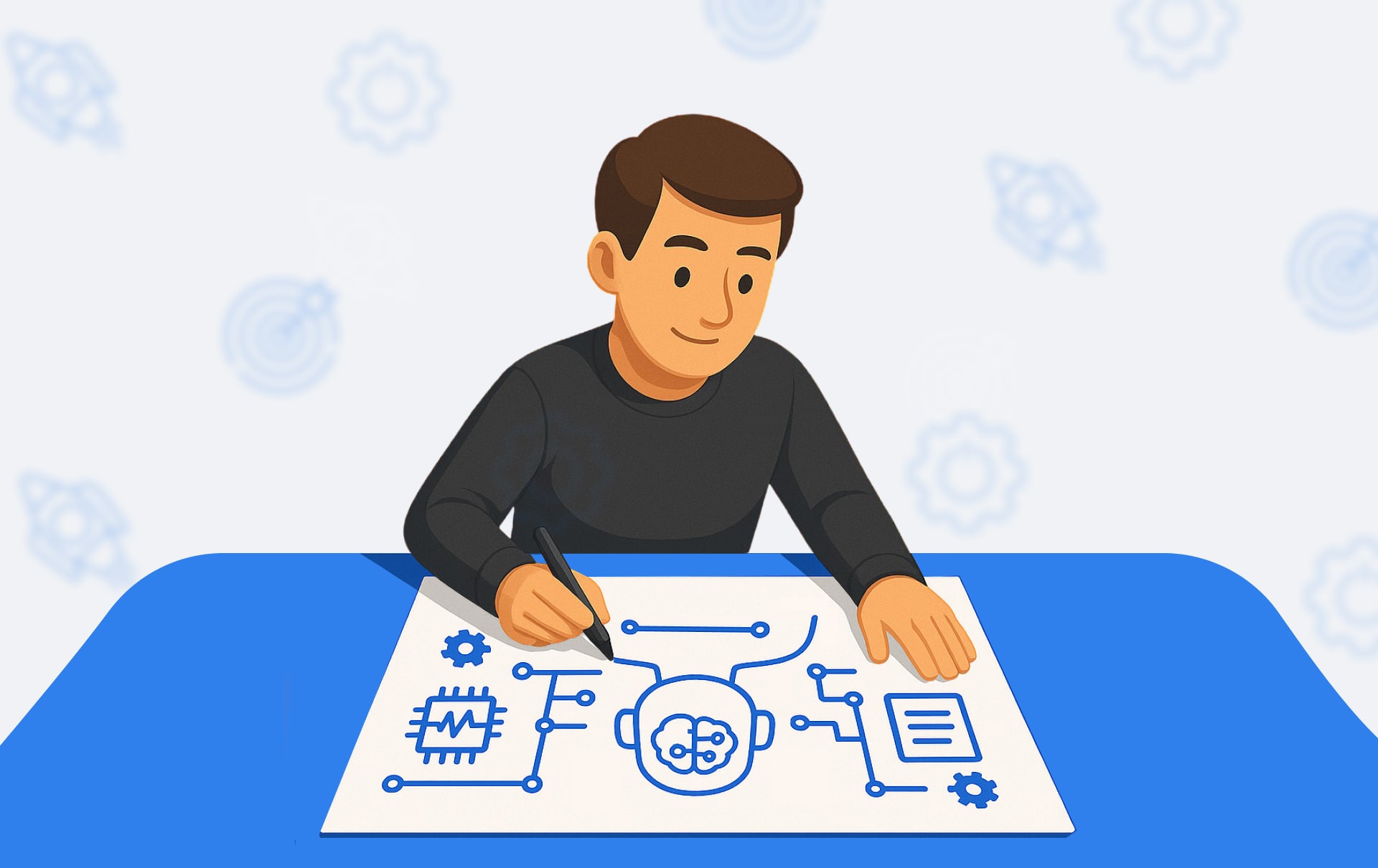AI Readiness: How to Assess If Your Enterprise Is Ready for AI Adoption
Discover how to assess AI readiness in your enterprise with a practical AI readiness assessment framework, maturity models, and checklist. Learn why many organizations struggle with AI adoption, how to evaluate strategy, data, technology, people, and governance, and what steps to take to achieve enterprise AI maturity.
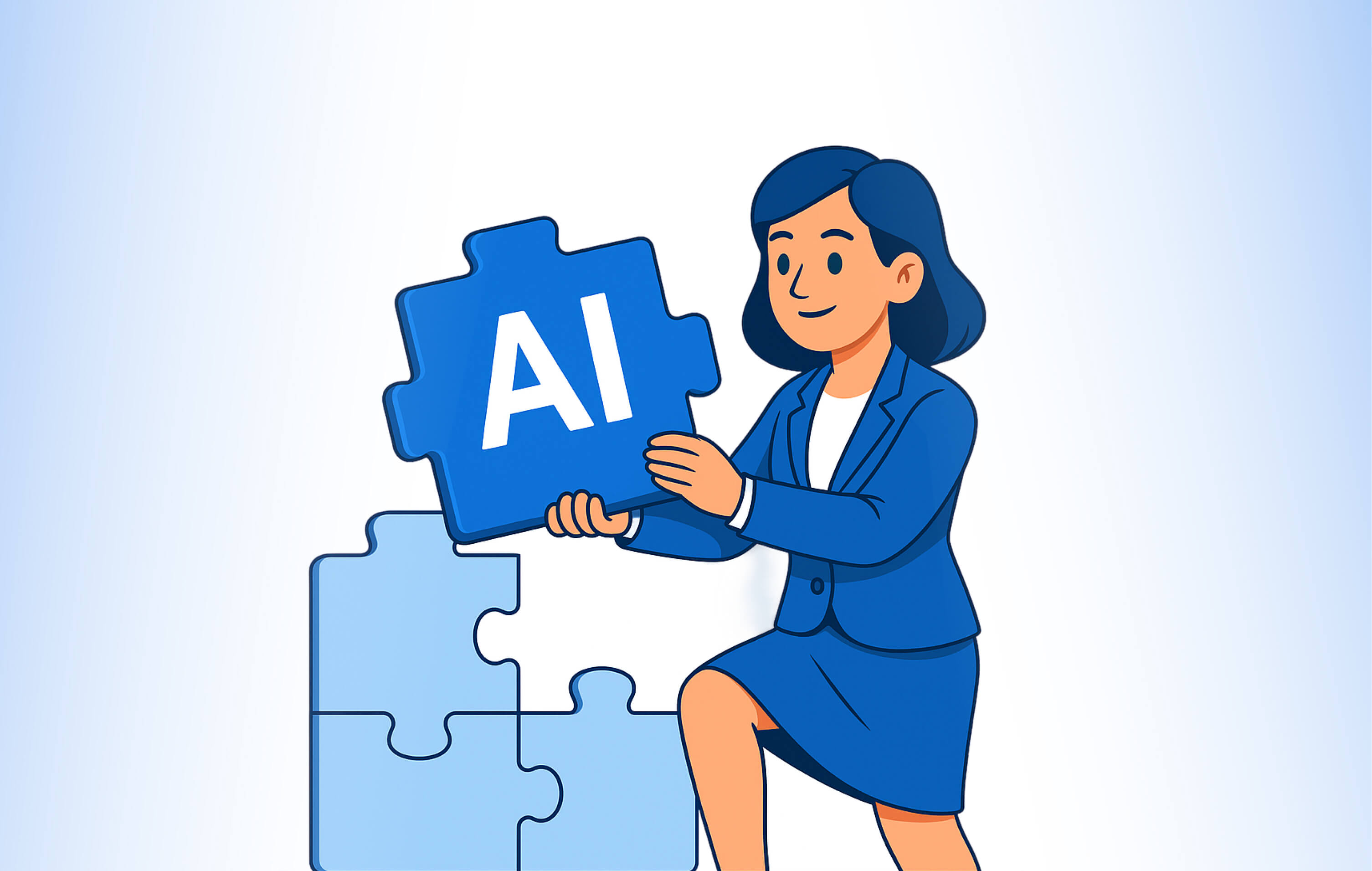
Artificial intelligence is no longer a futuristic vision—it’s a competitive necessity. Yet, while enthusiasm for AI adoption in enterprises is high, many organizations still fail to scale projects beyond pilots. The root cause often isn’t technology itself, but a lack of AI readiness.
In fact, only 1% of executives consider their generative AI initiatives “mature”, reflecting that most organizations remain in early stages and aren’t realizing AI’s full value. Surveys confirm this readiness gap: after years of AI pilots, 74% of companies have yet to see tangible value at scale from AI. The culprit is not AI technology itself, but a lack of AI readiness – the foundational preparedness across strategy, data, people, and processes needed to unlock ROI and avoid stalled pilotsю

Despite the rush to integrate powerful new models, about 5% of AI pilot programs achieve rapid revenue acceleration; the vast majority stall, delivering little to no measurable impact on P&L. Fortune
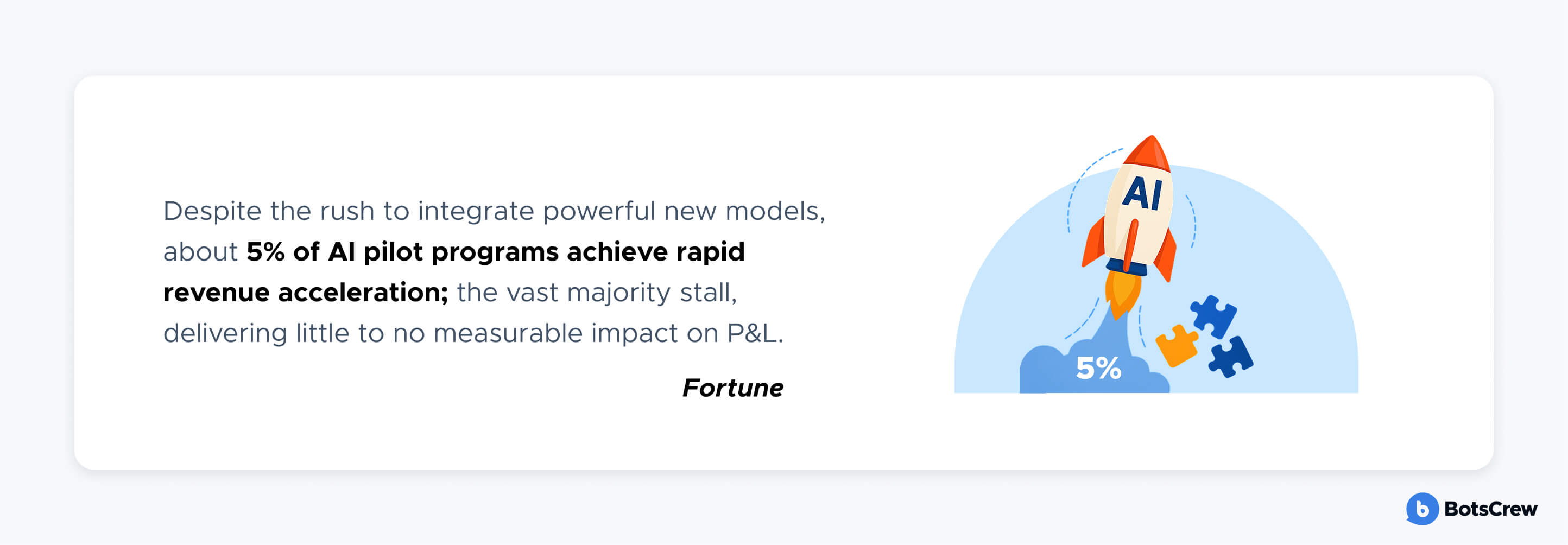
This article explores what AI readiness means, why enterprises often fail to scale AI, and how to assess your organization’s maturity. We’ll introduce a structured AI readiness assessment framework and practical checklists, so that C-level leaders can ensure their enterprise is truly prepared for successful AI adoption. By understanding and improving your AI readiness, you build the critical foundation for AI-driven transformation. Let’s dive in.
What Is AI Readiness?
AI readiness refers to the degree to which an organization’s people, processes, technology, and culture are prepared to adopt, scale, and sustain AI solutions. It’s not just about having data scientists or advanced algorithms; it’s about organizational alignment, leadership vision, and robust foundations across the enterprise.
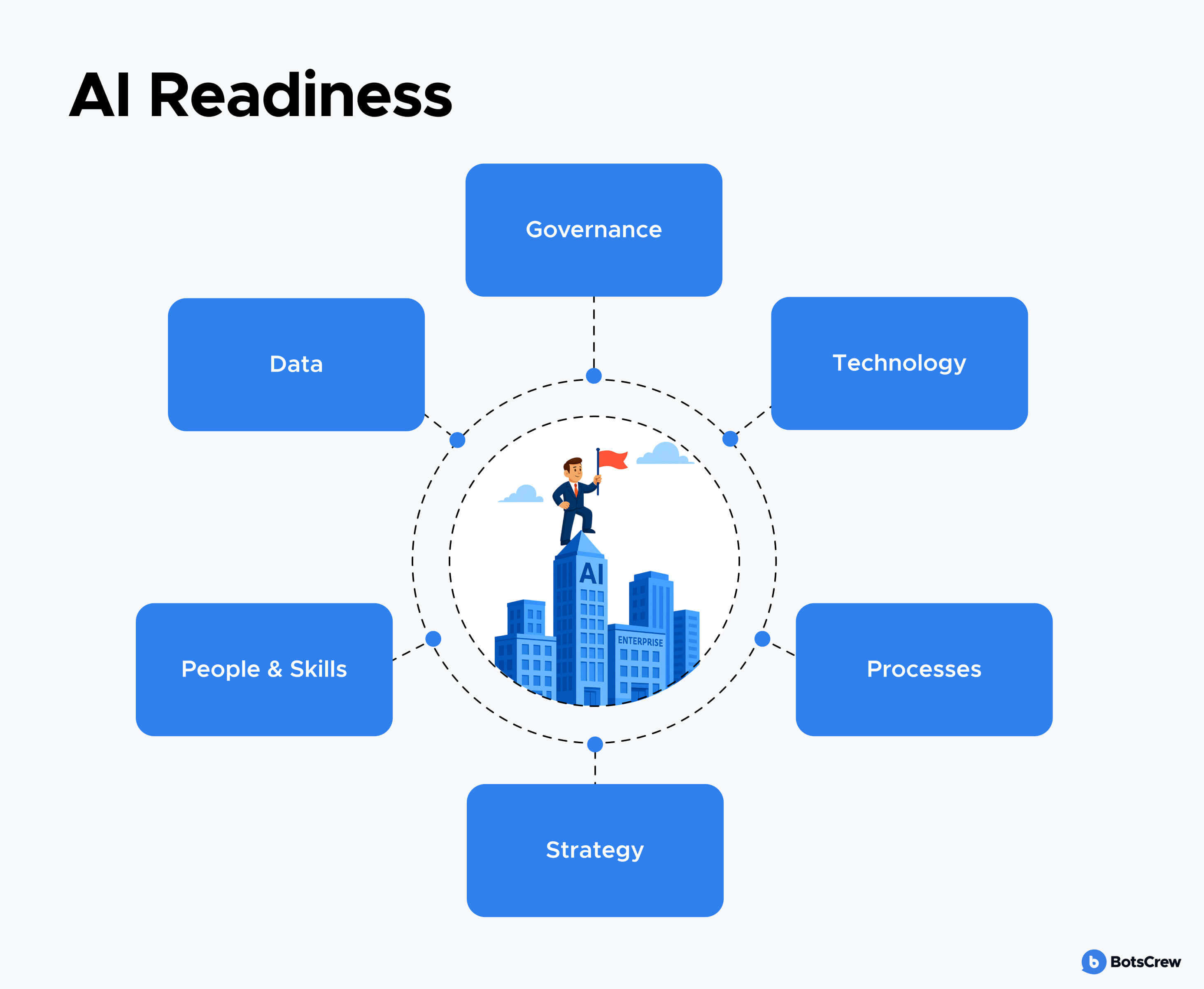
In practical terms, being “AI ready” means having the right infrastructure, data, talent, and processes in place so AI initiatives can succeed and scale. It’s a holistic state of preparedness that goes beyond dabbling in a few pilot projects.
One way to think about AI readiness is through AI maturity models. For example, Gartner defines levels from Level 1 (Awareness) – organizations that know about AI but haven’t used it much – up to Level 5 (Transformational), where AI is pervasively integrated into every process.
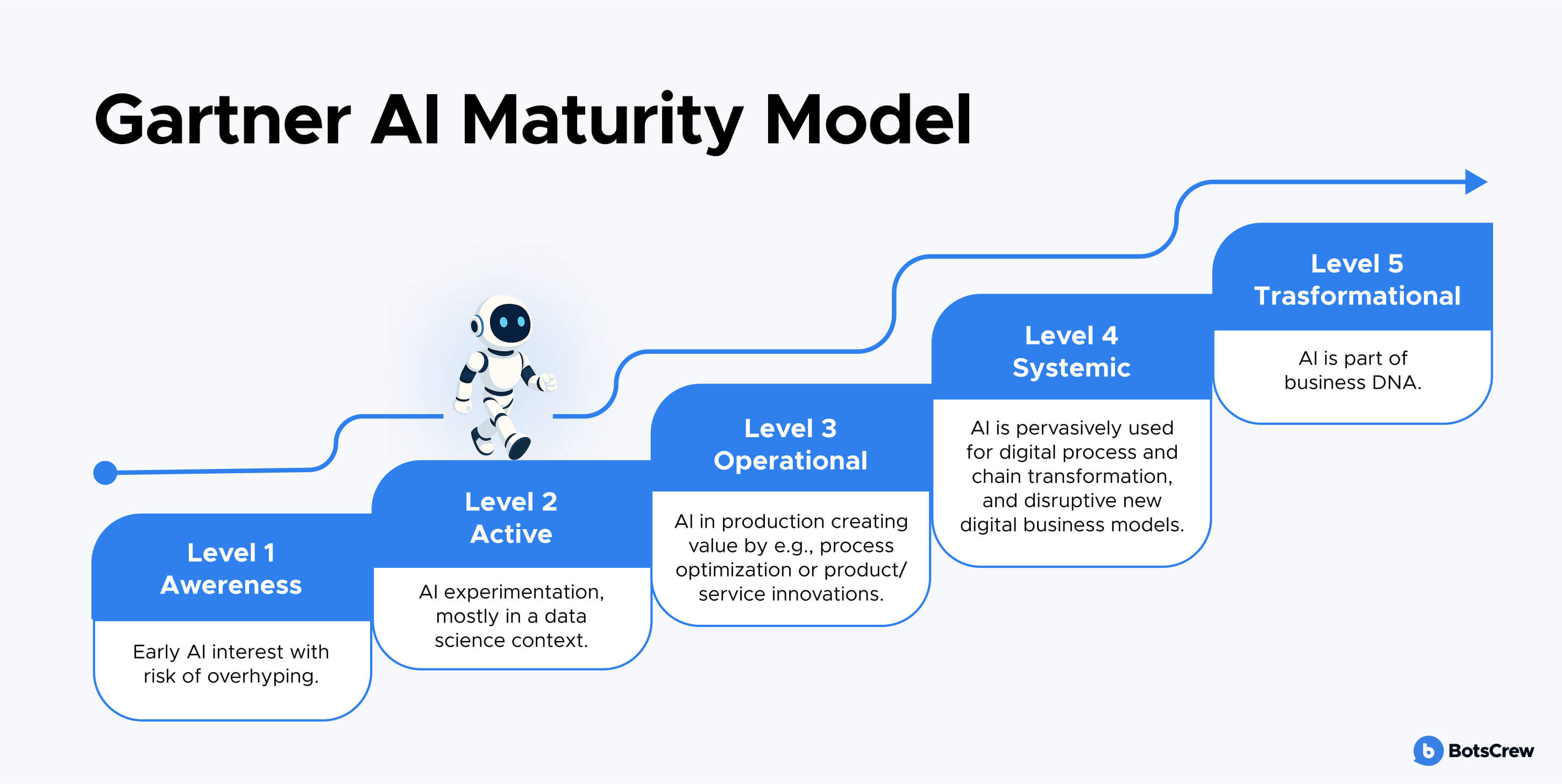
Most enterprises today are at early maturity (awareness or limited experiments), and very few have reached the transformational stage of enterprise AI that firms like Google or Amazon exhibit. Organizational readiness for AI implies progressing along this maturity curve – moving from isolated pilots to a systematic, enterprise-wide capability.
🤝 Book a Free Consultation Call
Discuss your organization’s AI readiness with our experts. Get tailored insights and a step-by-step roadmap to move from pilots to enterprise-scale AI.
Why Enterprises Struggle with AI Adoption
If AI offers so much promise, why do so many enterprise AI initiatives stall or fail to scale? Here are five common enterprise AI adoption challenges that often signal gaps in AI readiness:
Lack of leadership buy-in.
Many AI projects begin as technology experiments without a defined AI business strategy or C-suite support. Without top-level sponsorship and strategic direction, efforts become scattered and fail to solve real business needs. It’s no surprise that projects tend to “die without C-suite sponsorship”. Executive alignment and vision are critical to guide AI investments.
Research shows that companies with a bold, enterprise-wide AI strategy (championed by top leadership) are 3× more likely to succeed with AI initiatives.
Data silos and poor infrastructure block scalability.
AI is fuelled by data – but enterprises frequently struggle with fragmented data silos, poor data quality, and lack of governance. These issues severely hinder AI initiatives. If your data is not accessible, clean, and fit for purpose, even the best algorithms will produce garbage outputs (“garbage in, garbage out”). A strong data infrastructure and data governance program are non-negotiable prerequisites for AI success.
of organizations estimate their data is not AI-ready.
Shortage of technical skills and internal AI knowledge.
The shortage of AI and data science talent is a major hurdle. Companies report an “ongoing struggle to acquire AI talent and skills” as they ramp up projects. In a recent survey, 27% of organizations cited skills shortages as a primary concern affecting their AI initiatives.
Beyond hiring data scientists, enterprises often need to upskill their existing workforce in AI literacy. Without the right people and training, AI projects can stall due to lack of expertise.
of companies generative AI implementation is falling short due to the “learning gap” for both tools and organizations.
Weak governance and compliance readiness.
Deploying AI at scale introduces new risks – from biased algorithms and ethical pitfalls to regulatory compliance (e.g. privacy laws, emerging AI regulations). Many organizations lack strong AI governance frameworks to manage these risks. They must establish policies for transparency, fairness, and compliance (the EU AI Act is one prominent example). Neglecting governance can lead to project shutdowns or reputational damage if AI systems behave irresponsibly.
Overemphasis on pilots without a scaling strategy.
It’s common for companies to have numerous AI proofs-of-concept that show promise, yet never transition to full production deployment. This pilot paralysis often stems from not planning for scalability upfront – lacking the roadmap, budget, or organizational buy-in to roll out AI broadly.
of companies now abandon the majority of their AI initiatives before they reach production.
Without a scaling strategy, even successful pilots can wither on the vine.
Research finds roughly 70% of AI project challenges arise from people and process issues (strategy, culture, skills, change management), with only 20% related to technology and 10% to algorithms. Too often, enterprises fixate on choosing the right AI tool but underestimate these organizational factors. Recognizing these common challenges is the first step; the next is systematically assessing and improving your AI readiness to overcome them.
Without addressing these barriers, enterprises risk stalling at proof-of-concept and missing a competitive advantage.
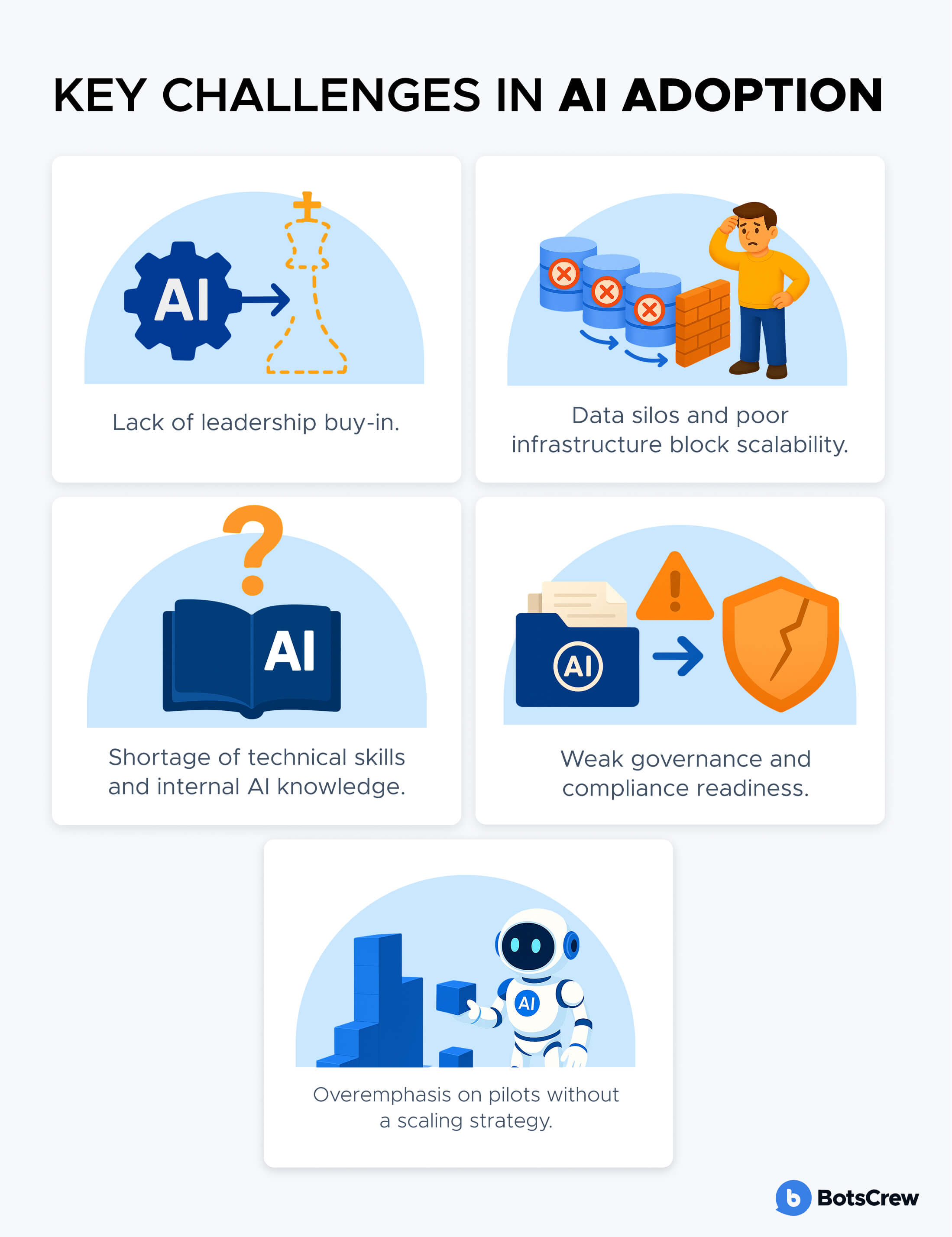
The AI Readiness Assessment Framework
To bridge the gap between AI ambition and real outcomes, leading organizations conduct an AI readiness assessment – essentially an audit of how prepared your enterprise is across key dimensions. A comprehensive AI readiness assessment framework will typically examine five core areas of your business capabilities
Data Infrastructure Readiness
Is your data “AI-ready”?
AI thrives on high-quality, accessible data. If your enterprise data is siloed, inconsistent, or poorly governed, your AI initiatives will face immediate roadblocks.
An assessment should evaluate:
- Data quality: Are your datasets clean, accurate, and standardized?
- Integration: Can data flow seamlessly across departments and systems?
- Governance: Are there clear policies for data ownership, access, and stewardship?
- Security: Do safeguards exist to protect sensitive information while enabling AI training and inference?
Strong data foundations mean faster time-to-value for AI projects and greater scalability across use cases.
Technology & Architecture
Even the best data is useless without infrastructure capable of handling AI workloads.
An assessment should examine whether your current IT architecture—from cloud platforms and storage to networking and ML Ops—can support the scale, complexity, and security demands of enterprise AI.
Key checkpoints include:
- Computational power: Do you have sufficient GPU/CPU resources for training and inference?
- ML Ops maturity: Are there processes for versioning, deployment, and monitoring models?
- Integration: Can new AI systems work seamlessly with your existing platforms and workflows?
Technology gaps don’t just slow AI adoption—they increase risk and cost. The goal is a flexible, scalable, and future-proof architecture.
People & Skills
AI is not just about machines; it’s about people.
An effective readiness assessment asks:
- Do you have the right talent? Data scientists, ML engineers, and AI strategists may be in-house or accessed through partnerships.
- Is your workforce AI-literate? Employees don’t need to code models, but they must understand how to use and trust AI-powered tools.
- Is there cultural readiness? Resistance to change is one of the most common barriers to adoption.
Without investment in training, upskilling, and change management, AI solutions risk underutilization. Successful enterprises treat AI not as a “bolt-on” tool, but as a collaborative coworker integrated into daily operations.
Processes & Governance
AI introduces new risks—ethical, operational, and reputational. That’s why governance is critical.
An AI readiness audit should explore:
- Process optimization: Where can AI create efficiencies or new value streams?
- Risk management: Are there clear policies for data privacy, security, and model transparency?
- Ethical use: Are systems monitored to ensure fairness, avoid bias, and meet regulatory requirements?
- Oversight: Do you have human-in-the-loop review and audit trails for critical AI decisions?
Robust governance ensures AI is not just effective, but responsible and trustworthy.
Business & Strategy Alignment
Finally, AI readiness isn’t about technology alone—it’s about business alignment.
A mature enterprise should be able to answer:
- Where does AI create value? Efficiency gains, customer experience improvements, or entirely new revenue models.
- Is there executive sponsorship? Without leadership buy-in, AI projects often stall at the pilot stage.
- Is there a roadmap? AI initiatives should tie directly to strategic priorities, with measurable KPIs and milestones.
The best AI strategies are business-first, tech-second. AI is most powerful when embedded into the organization’s core objectives rather than treated as a side project.
⚡ Run the Free AI Readiness Assessment
Evaluate your organization’s strategy, data, technology, talent, and governance in minutes. Get an instant snapshot of your AI maturity and identify the gaps holding you back.
A strategic readiness assessment should reveal both strengths and gaps. Perhaps your company has great data scientists but poor data quality, or strong executive support but inadequate IT infrastructure. The goal is to pinpoint where you need to invest or improve before scaling AI. Tools like AI maturity models are often used in this process to benchmark your current level and target state. Ultimately, the AI readiness framework provides a structured way to measure preparedness and prioritize next steps on your AI journey.
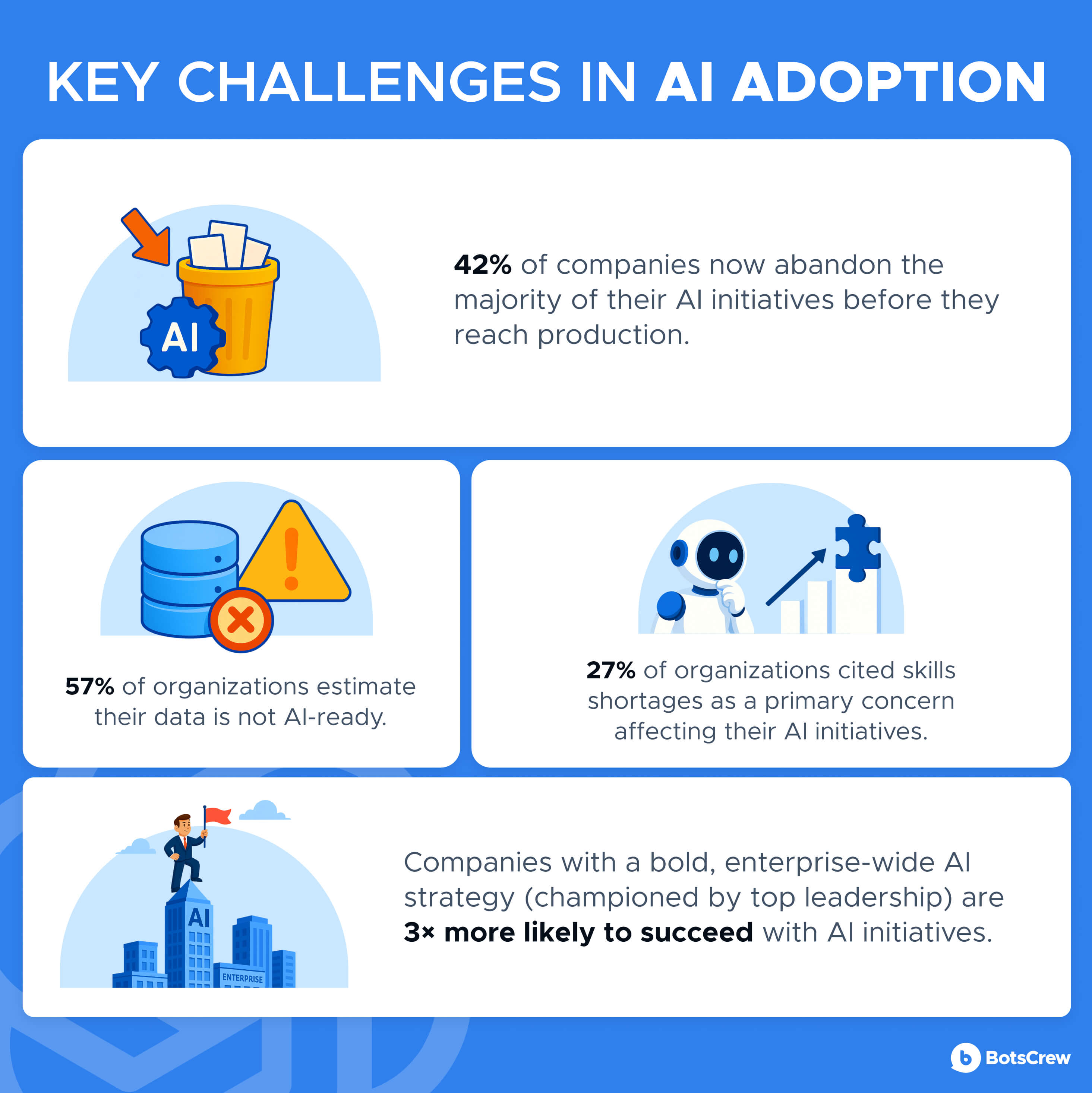
Practical Tools: AI Readiness Checklist & Maturity Models
For leaders preparing to evaluate their AI readiness, it’s useful to have some practical tools. Two commonly used aids are readiness checklists and AI maturity models.
1. AI Readiness Checklist:
A checklist is a simple but effective way to cover all bases during assessment. Here’s an example AI readiness checklist executives can use as a starting point:
✅ Strategy & Leadership: Do we have a clear AI strategy with defined business outcomes? Is there executive sponsorship and cross-functional buy-in for AI initiatives?
✅ Data Foundation: Do we have high-quality, relevant data available for AI use cases? Are data sources integrated (vs. siloed) and governed (security/privacy in place)? Essentially, is our data “fit for purpose” for AI?
✅ Technology Infrastructure: Can our current IT architecture support AI solutions? This includes sufficient computing resources (GPU clusters or cloud services), modern data platforms, and tools for model development and deployment. Identify if any technology upgrades or new tools are needed for scaling AI.
✅ Talent & Skills: Do we have people with AI/ML expertise on board? And have we trained our wider workforce to use AI tools appropriately? Evaluate both specialized skills (data scientists, ML engineers) and general AI literacy among employees. If gaps exist, plan for upskilling or recruiting talent.
✅ Processes & Governance: Are there processes in place for developing, testing, and monitoring AI models (e.g. an MLOps pipeline)? Do we have governance policies to ensure ethical AI use and compliance? Check for risk management practices around AI (bias audits, human oversight, contingency plans if AI outputs are wrong). Also, consider change management processes to integrate AI into workflows smoothly.
This checklist isn’t exhaustive, but it covers the AI readiness essentials. Answering these questions honestly will highlight areas that need attention. For instance, a “no” on data quality or on executive sponsorship should be addressed early. Some organizations formalize this into an AI readiness scorecard – rating each area on a maturity scale. The result is a clear visualization of where you stand and where to improve.
2. AI Maturity Models
As mentioned, maturity models provide a framework to gauge how far along the AI adoption curve an enterprise is. There are various models (from Gartner, Deloitte, etc.), often with 4 or 5 levels ranging from initial experimentation to fully optimized AI-driven enterprise.
Using a maturity model, you can benchmark your organization. For example, if you rate as “Level 2 – Active experimentation” but not yet “Level 4 – Systemic adoption”, that indicates the gap to close. Many AI readiness assessments incorporate such models to structure the evaluation. They also help communicate to stakeholders – e.g. showing that “We are at maturity 2 out of 5 today in data and process, aiming to reach level 4 in the next two years.”
One striking finding from industry research is that very few companies reach the highest maturity levels. Most enterprises are still developing basic AI capabilities, and only a small elite have mastered AI across the organization. This underscores that achieving full AI maturity is a journey. The maturity model can guide that journey by outlining what capabilities need to be built at each stage (such as moving from siloed pilot projects to a centralized AI strategy with governance and widespread usage).
In practice, you might use a checklist for the initial self-assessment, then an AI maturity model for a deeper dive and benchmarking. Combined, these tools ensure you “look at every aspect of your AI transformation” (as one enterprise checklist put it) and have a roadmap to advance your maturity. The key is to turn insights from these tools into an actionable plan – which brings us to moving from assessment to action.
Moving From Assessment to Action
Conducting an AI readiness assessment is only valuable if it leads to concrete improvements. After identifying gaps and opportunities, enterprises must translate those insights into a strategic action plan. Here’s how to move from assessment to tangible AI adoption results:
1. Prioritize Initiatives and Quick Wins: Not all AI opportunities are equal – some will deliver higher ROI or are more feasible given your current readiness. Use the assessment findings to prioritize a handful of high-impact, achievable AI use cases. Successful AI leaders “invest strategically in a few high-priority opportunities” rather than spreading too thin.
2. Develop a Phased Roadmap: An AI roadmap should plot immediate, mid-term, and long-term actions. Many consultancies suggest creating a phased implementation plan with defined projects, timelines, and milestones. The important point is to have a sequence that links readiness improvements with AI project rollouts. It’s about balancing quick wins with foundational work.
3. Establish KPIs and Measure ROI: From the outset, define how you will measure the success of AI initiatives. Whether it’s reduced processing time, higher revenue, improved customer satisfaction, or cost savings, set key performance indicators (KPIs) tied to business outcomes. Ensure each pilot has clear criteria for success before scaling.
4. Invest in People and Change Management: A recurring theme in AI transformations is the central role of people. As Boston Consulting Group emphasizes, companies need to focus about two-thirds of their effort on people-related capabilities (skills, change management, workflow redesign) and only one-third on technology and algorithms. In practice, this means budgeting time and resources for training programs, upskilling employees to work with AI, and redesigning processes to integrate AI outputs. Also, proactively manage change – communicate with employees about how AI will impact roles, address concerns (e.g. fear of job displacement), and involve end-users in the implementation process.
5. Continuously Refine and Govern: AI readiness is not a one-and-done checklist – it’s an ongoing capability that must be maintained. After initial deployments, continue to refine your data practices, update technology, and evolve governance as new risks or regulations emerge. Build feedback loops: lessons from each AI project should inform improvements to your data, tech, or training programs. Treat AI readiness as a living program, with periodic reassessments or “audits” to track progress.
By taking these steps, you turn the insights from an AI readiness assessment into action and, ultimately, sustainable AI capabilities. The difference between companies that achieve scalable AI success and those that stagnate often comes down to execution on these fronts. As one Google Cloud director put it, “to win in 2025 and beyond, the defining capability will be moving pilots into everyday practice,” which requires cultivating the internal capabilities, culture, and structures to scale AI with confidence. In short: assess, plan, execute, and repeat – that is the path from readiness to results.
Conclusion
In conclusion, AI readiness is the foundation of enterprise AI success. Without a readiness baseline, AI investments risk becoming costly science projects with little ROI. It’s telling that three-quarters of companies have yet to unlock real value from AI – often because they jumped in without the necessary strategy, data maturity, talent, or governance in place.
By contrast, organizations that approach AI as a transformative program – starting with alignment and preparedness – are able to scale projects that drive significant business value. AI readiness separates the experimenters from the achievers.
If you’re unsure where to start, consider leveraging expert help. BotsCrew – a leader in enterprise AI solutions – offers a free AI Readiness Assessment to help you uncover your organization’s AI maturity gaps and opportunities. Our team specializes in bridging the gap between AI strategy and execution, providing you with a tailored roadmap for AI adoption. We’ll work with you to evaluate your data, technology, people, and processes, and deliver clear next steps to become AI-ready. Don’t let your AI pilot projects stall or get left behind in this AI-driven era.
Empower your enterprise to be truly AI ready – and reap the rewards of AI at scale. Get started with your free AI Readiness Assessment with BotsCrew today.
💡 Turn AI Readiness Into Action
Not sure how to act on your assessment results? Schedule a free consultation call with BotsCrew to explore the best next steps for your business.






